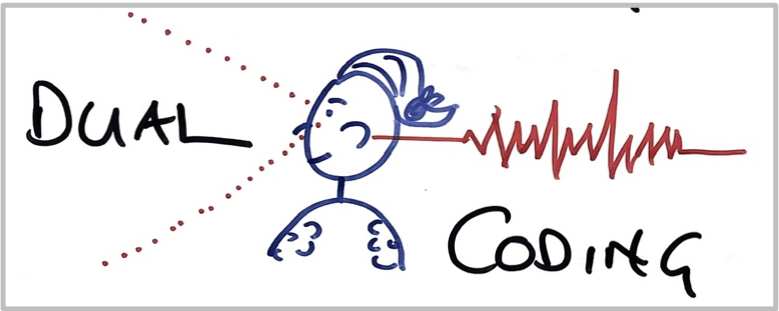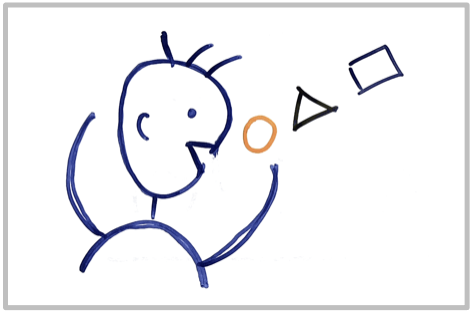Using learning science in accounting education
I recently addressed accounting educators at a conference about using learning science in accounting education. My session was immediately after lunch. Anybody with teaching or training experience knows that these postprandial slots are challenging. You’re up against the biological processes of metabolism — your audience feels sleepy and has trouble concentrating.
A helpful technique is to get them working and moving. So, rather than worry about stuffing their heads with information, I asked the group to apply learning science techniques to one or more of their teaching methods.
Here are some thoughts that might help you do that too.
A little bit of neurology
Brain function is a product of genes and environment. All learning activities, knowledge and memory are physiological phenomena in our neurons and neural pathways. The brain’s architecture and gross structure appear to be substantially determined by genes. The fine structure of neural networks, however, is shaped by experiences and capable of substantial modification. Academics refer to this as plasticity. Accepting this principle, we can design learning environments that enhance and strengthen the neural pathways of our students.
A prominent voice in this area of psychology is Carol Dweck, with her work on “growth mindset”. Her studies show that knowing your intellectual abilities are, to some degree, in your own hands significantly impacts learning and performance. A practical implication of this insight is that we should praise effort. Grit, curiosity, discipline, a growth mindset, and persistence drive higher learning and success.
A related insight is that significant learning is difficult. Setbacks are signs of effort, not of failure, and it is the striving that builds expertise. It is effortful learning that changes the brain, making new connections, building mental models, and increasing capability.
What is learning?
Learning is a tricky concept to pin down. Mark K Smith’s article on infed.org explores some of the complexities but also provides a good “starter definition”. He suggests that learning involves encountering signals from the senses; attending to them; looking for connections and meanings; and framing them so that we may act. It is a process, often not under our control, that is connected with our environment and the relationships we make.
Skipping over learning theories, pertinent to this discussion is the idea that understanding is distinct from learning. During a lesson or workshop, an “a-ha moment” is likely to signify understanding but is no guarantee that the learner will later spend any time in effortful learning that consolidates their understanding into long-term memory. I warn my students not to succumb to “illusions of knowledge” by mistaking their understanding in the classroom for mastery of the concepts.
Some myths about how we learn
Adopting a pedagogical lens requires careful curation of learning methods and discarding those terms and concepts not supported by evidence. The following are often assumed to be so, even among learning specialists, but they are not supported by cognitive psychological literature.
- We only use 10% of our brain. This is nonsense.
- We store memories in our brains like in a computer: each memory goes into a tiny piece of the brain. They don’t.
- Individuals learn better when they receive information in their preferred learning style (e.g., auditory, visual, and kinesthetic). Not true — preferences do not correlate with learning effectiveness.
- Differences in the left and right brain help to explain differences among learners. There are indeed brain hemispheres, but they do not explain learning differences.
- Emotional brain processes interrupt the processes involved with reasoning. They don’t, usually, if we exclude extreme emotional responses and trauma.
Future studies may change our understanding, but the current evidence to support these ideas is either weak or non-existent.
Become a member
We’re building a community for students and teachers to learn from each other. Currently, membership is free.
Join todayLearning strategies that work: making it stick
Here are some learning strategies that are supported by evidence-based research. Consider implementing these into your course design and teaching.
Dual coding theory

Dual coding describes a theory that learning improves when visual and verbal information is combined. We process visual information synchronously, which provides perceptions of details, relationships, and the whole. We process verbal information sequentially, which is more constrained and effortful. Learners are able to access more working memory when the same information is presented in two ways. Long-term memory is also boosted, as two connected memory traces are more robust than one.
The structure of knowledge

Somewhat related to dual coding is the work of Frederick Reif (2010, quoted by Miller, 2018), a professor of physics and education at Carnegie Mellon University. His concern was the limited information-processing capacity of humans and, therefore, the challenge for teachers and learners to deal with large amounts of knowledge. He believed that instructional effort should pay as much attention to the organisation of acquired knowledge as to its content.
The article Dual coding in accounting education sets out practical ways to use dual coding and structure of knowledge in accounting.
Interleave the study of different problem types

Interleaved practice is more effective than blocked practice. Blocked practice feels like mastery and produces better results in the practice session. Trying different problem types feels more challenging but improves learning. Interleaving enhances the ability to discriminate between different kinds of problems and to apply the correct technique. Be aware, however, that using it too early might cause confusion and frustration for some students.
For example, say you want to teach the different methods of classifying assets. Interleaved examples might include a mix of tangible, intangible, financial, current and non-current. A blocked sequence would provide a list of examples of each type in turn.
Practice retrieving new learning from memory

Retrieval practice arrests forgetting. Recalling what is at risk of being forgotten secures it in memory. It feels awkward and frustrating and unproductive. But these are the feelings that strengthen memory and learning. Some studies also show that learning improves even when the effort you make to recall information results in failure. That is, if you give up and look up the answer, you are still more likely to remember it.
Self-quizzing is an effective retrieval practice technique.
Space out your retrieval practice

Spacing means that we separate periods when we study a concept or topic with a delay. Spaced practice is more effortful and challenging, but you are constructing long-term memories, which is more effective. As you become more familiar with concepts, leaving considerable time between practice sessions and lengthening the time between sessions strengthens and deepens learning. The alternative, massed practice, stimulates short-term memory, so feels adequate but is likely to produce illusions of knowledge.
Elaboration

Elaboration is consciously relating new material to what you already know. It helps learners to find additional layers of meaning in new material. Applications of the strategy include asking why or how questions, visualising examples, or asking learners to explain what they have learned to someone else.
Say you are teaching financial statement elements. Students might suggest reasons why recognition criteria exclude some assets but include others. Ask them to come up with examples of assets that fail to meet the recognition criteria.
Other ideas
I have summarised six strategies for evidence-based learning. Of course, there is more to say about each of them, and other strategies are worth looking into, including the following.
Generation is a form of experiential learning. It is learning by doing rather than reading a text or hearing a lecture.
Reflection is spending time after learning new material and turning over the ideas in your mind. Ask yourself questions. What went well? Even better if?
Calibration is aligning your judgments with objective feedback and doing quizzes, for example. This is necessary as a modifier for elaboration.
Mnemonic devices can help you to retrieve what you have learned but are not tools for learning new information.
Why learning science is relevant
Considering our teaching methods through a pedagogical lens brings benefits to us as educators and to our students:
- Using the language of cognitive psychology enables us to explain precisely how our methods correlate strongly with evidence-based learning science.
- We might identify aspects of learning science that are not currently strongly correlated with our teaching and learning methods.
- We can use this to evaluate what we do and improve teaching and learning effectiveness.
Resources, references and further reading
Brown, P. C., Roediger, H. L. & McDaniel, M. A. (2014). Make it stick, the science of successful learning. London, UK: Belknap Press.
Caviglioli, O. (2019). Dual coding with teachers. Melton, UK: John Catt, Hodder Education.
Medina, J. (2014) Brian Rules: 12 Principles for surviving and thriving at work, home and school. Seattle: Pear Press
Miller, F. (2018) Organising knowledge with multi-level content: making knowledge easier to understand, remember and communicate. Available at: https://www.francismiller.com/organising-knowledge/ (Accessed: 12 March 2021).
Smith, M. K. (2020). ‘Learning theory’, The encyclopedia of pedagogy and informal education. Available at: https://infed.org/mobi/learning-theory-models-product-and-process/ (Accessed: 3 May 2023).
Weinstein, Y. & Sumeracki, M. A. (2019). Understanding how we learn: a visual guide. London, UK: David Fulton, Routledge.
© AccountingCafe.org
Part of the Pedagogy series
Join the Accounting Cafe community



